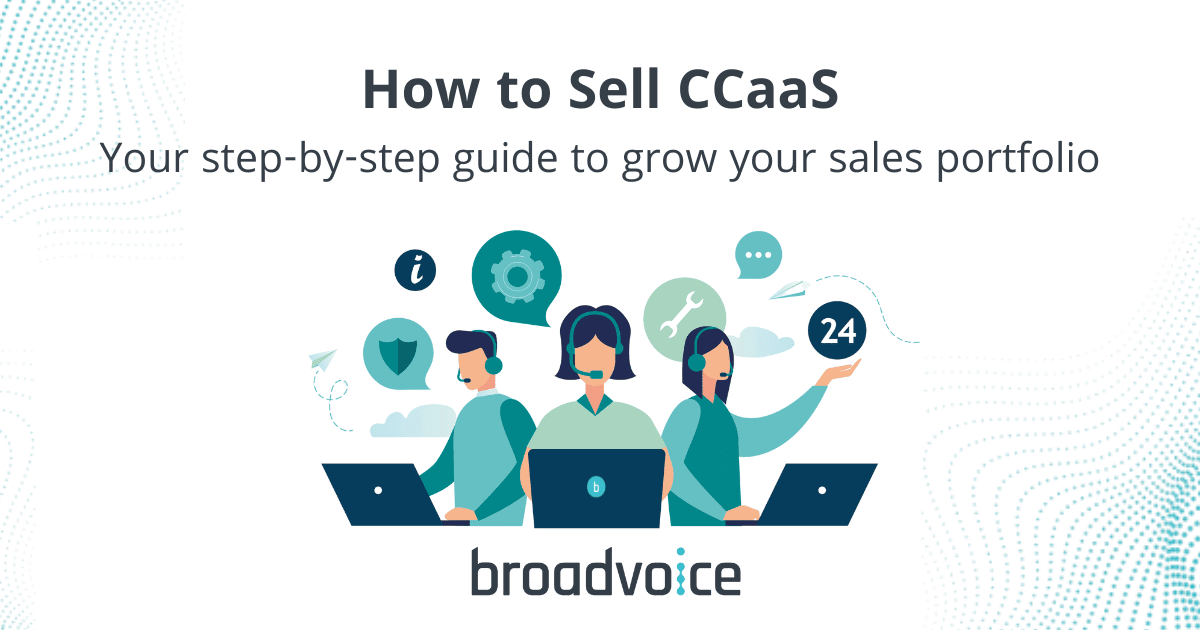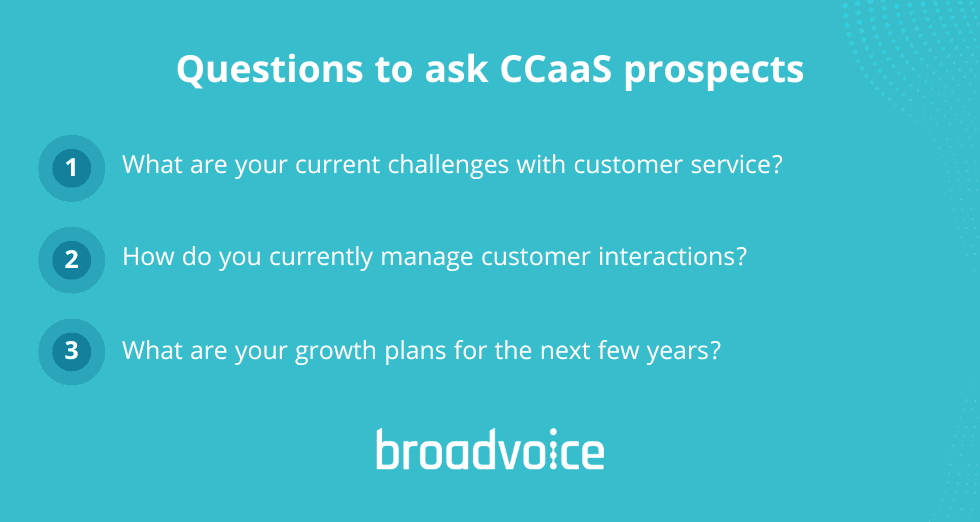Selling is an art. And, like any good artist, you need the right tools, techniques, and mindset to succeed. But selling contact center as a service (CCaaS)? Well, that’s more like sculpting. You’re shaping solutions tailored to each customer’s unique needs, chipping away at their pain points, and carving out a path to better customer experiences.
If you’re new to the CCaaS game, it can seem a little overwhelming. With all the buzzwords, technical jargon, and seemingly endless options, it’s easy to feel like you’re drowning in a sea of information. But don’t worry — you’re not alone. Tons of sales professionals have been right where you are now. The good news is there’s a clear path forward.
Selling CCaaS is more than just a sales pitch; it’s understanding the dynamics of customer service, technology, and business needs. It’s about listening to your customers, asking the right questions, and building solutions that truly make a difference. And yes, it’s about partnering with the right vendors who can support you every step of the way. (*cough* like Broadvoice *cough, cough*)
But how do you actually get there? How do you turn a CCaaS prospect into a loyal customer?
Let’s break it down into four easy steps.
Step 1: Find Your Ideal Customer Profile
You’re in tech sales, so you know this one. But, as you venture into a new market, it’s important to go back to the basics and understand exactly who you’re selling to. For instance, if you’re trying to sell a sports car to someone who lives in a traffic-heavy city and just wants to get from point A to B, you’re going to struggle. The same goes for CCaaS. You need to find your ICP — the customers who not only need what you’re selling but also recognize that they need it.
Here’s what your ideal customer might look like for CCaaS:
- Size and scale. Mid-market businesses and small enterprises are your prime candidates. They often have sprawling contact centers with a pressing need for a flexible, scalable solution. They want something to flex with them for seasonality and they’ll need something that can scale as they grow.
- Pain points. Look for companies with customer service bottlenecks, outdated on-premise systems, or an overworked IT team. These are the folks who’ll jump at a solution that offers flexibility and ease of management.
- Industries. Financial services, healthcare, retail, and e-commerce are hot sectors for CCaaS. These industries often have high customer interaction volumes and strict compliance needs, making them ripe for the picking.
Pro Tip: Don’t just guess. Use data! Pull information from your CRM systems, LinkedIn, and other sales tools to profile your leads accurately. The more you know, the more you can tailor your pitch and the higher your chances of closing the deal.
Step 2: Know the Right Questions to Ask
Asking the right questions is like turning on the lights in a dark room. It helps you see exactly what your prospect needs. Here’s a trick: the more open-ended your questions are, the more your prospect will talk, giving you valuable insights.
What are your current challenges with customer service?
This question digs into their pain points. You might hear complaints about long wait times, high call volumes, or difficulty managing remote agents. Each answer is a thread you can pull to showcase how CCaaS can help.
How do you currently manage customer interactions?
This helps you understand their existing setup. Are they using an outdated system? Are they struggling with integrating multiple channels? Once you know what they’re working with, you can position CCaaS as the solution to streamline their operations.
What are your growth plans for the next 2–3 years?
Companies with aggressive growth plans are usually in need of scalable solutions. CCaaS can grow with them, offering a future-proof investment that aligns with their long-term goals.
Pro Tip: Listen more than you talk. The best salespeople aren’t the best talkers — they’re the best listeners. The more you understand your customer’s unique situation, the better you can tailor your solution to their needs.
Step 3: Understand CCaaS Features and Functionality
In tech sales, you’re responsible for turning geek speak into human language that resonates with your prospects. But that can be hard if you don’t fully understand the features and functionality of CCaaS. Of course, your partner vendors are always willing to help, and we want to make sure you feel comfortable and confident enough to be the subject matter expert. To help, here are a few key features to focus on.
Key CCaaS Features to Highlight:
- Omnichannel support. CCaaS lets companies manage customer interactions across all channels — voice, chat, email, social media — from a single platform. This is a game-changer for companies looking to provide a seamless customer experience.
- Low code architecture. Having a low or no code platform means contact center managers can make changes to things like routing on the fly, without having to call IT for assistance.
- Workforce management. WFM makes forecasting and scheduling easy, plus it lets managers and directors keep a pulse on occupancy and adherence. Some of today’s WFM solutions (like ours) add AI into the process, so manual tasks are done without human intervention.
- Scalability. One of the most significant selling points is that CCaaS grows with the business. Whether they’re adding 50 agents or 500 agents, scaling is a breeze.
- Analytics and reporting. Real-time dashboards, reporting tools, and customer insights are huge draws for companies that want to make data-driven decisions.
- AI and automation. Features like AI-driven chatbots and automated workflows can significantly reduce operational costs while improving efficiency.
Pro Tip: Don’t just list features — show how they solve specific problems. For example, if your prospect struggles with high call volumes, highlight how AI and automation can handle routine queries, freeing agents for the more complex issues.
Step 4: Collaborate Effectively with Your Partner Vendor
Your vendor is not just a supplier — they’re your partner in crime. A strong relationship with your CCaaS vendor can make a world of difference in how successful you are in selling the product.
How to Maximize Your Partnership
- Stay informed. Keep up with product updates, new features, and case studies from your vendor. The more you know, the better you can position the product to your prospects.
- Co-selling opportunities. Work with your vendor to identify co-selling opportunities. They often have access to a wealth of market data and leads.
- Get vendor support. If a prospect has a highly technical question, don’t wing it. Bring in your vendor’s technical experts to assist with the demo or proposal. This not only ensures accuracy but also shows your customers that you have a strong support system.
Pro Tip: Build a personal relationship with your vendor’s sales team. A little rapport can go a long way when you need a favor or an extra push to close a deal.
Selling CCaaS isn’t just about moving a product — it’s about solving real business problems and building lasting relationships. By understanding your ideal customer, asking the right questions, mastering the product’s features, and working closely with your vendor, you’ll not only close more deals but also grow your reputation as a trusted advisor in the space.
Ready to dive into CCaaS? Contact your channel manager for more information.








